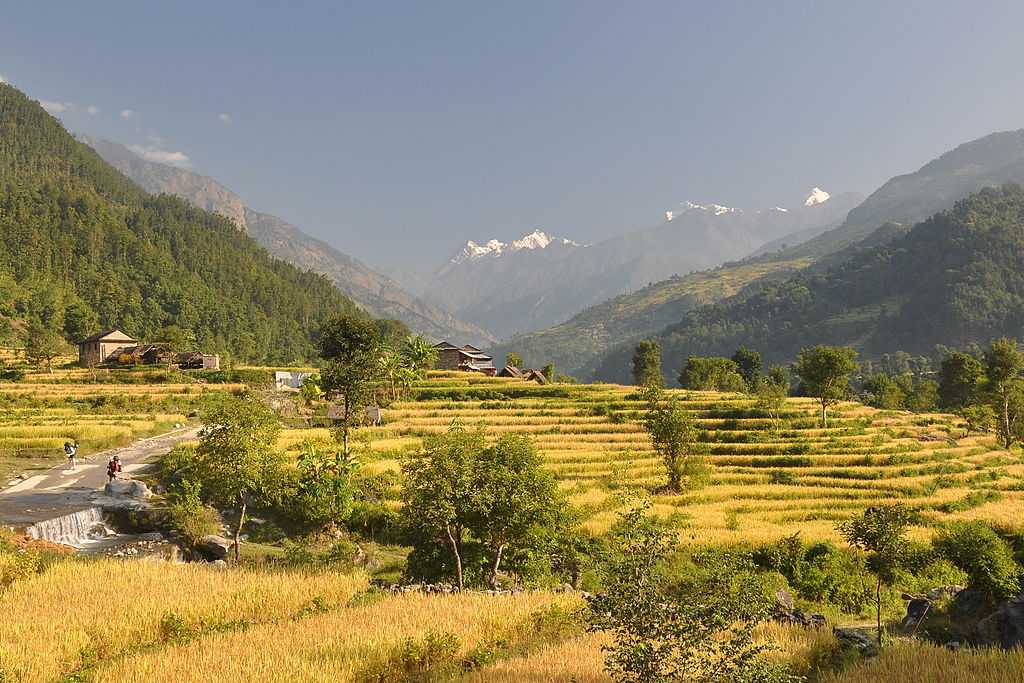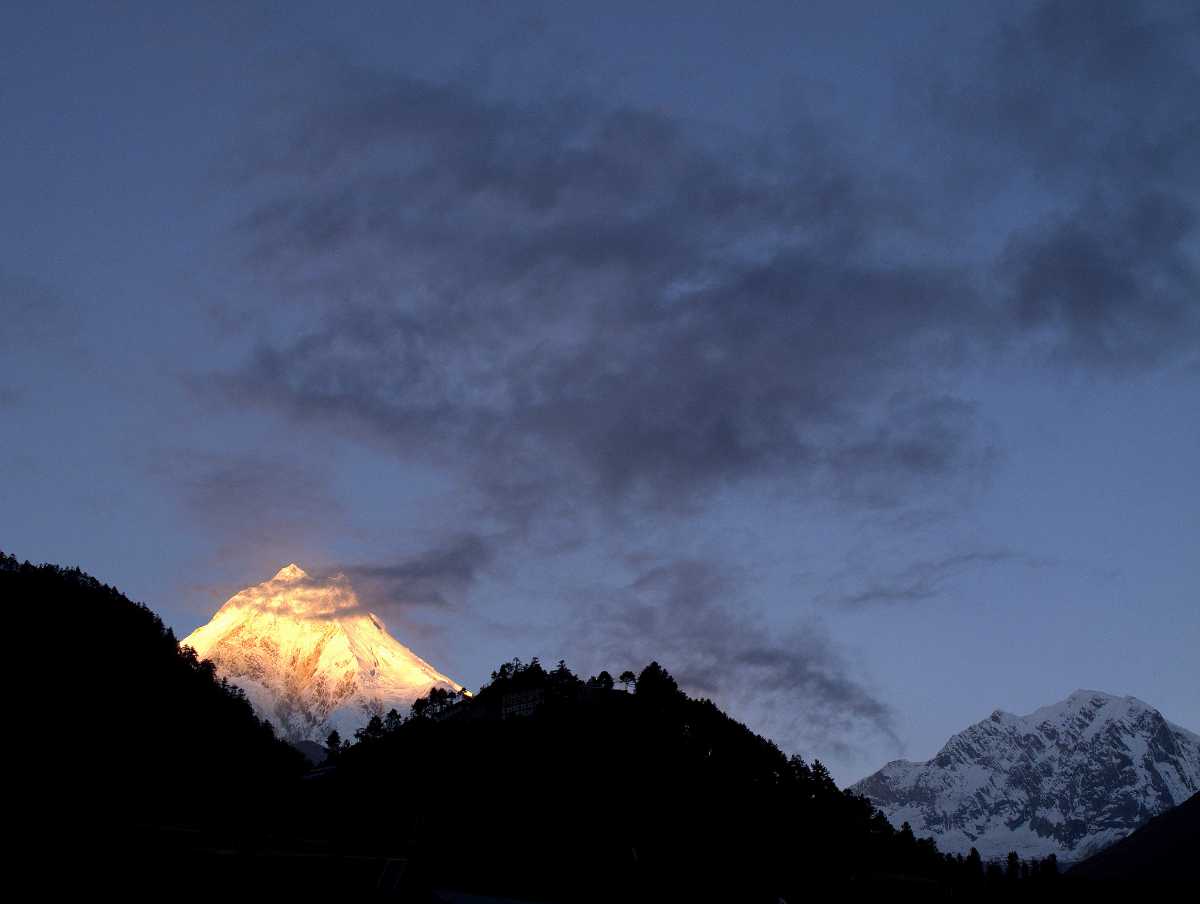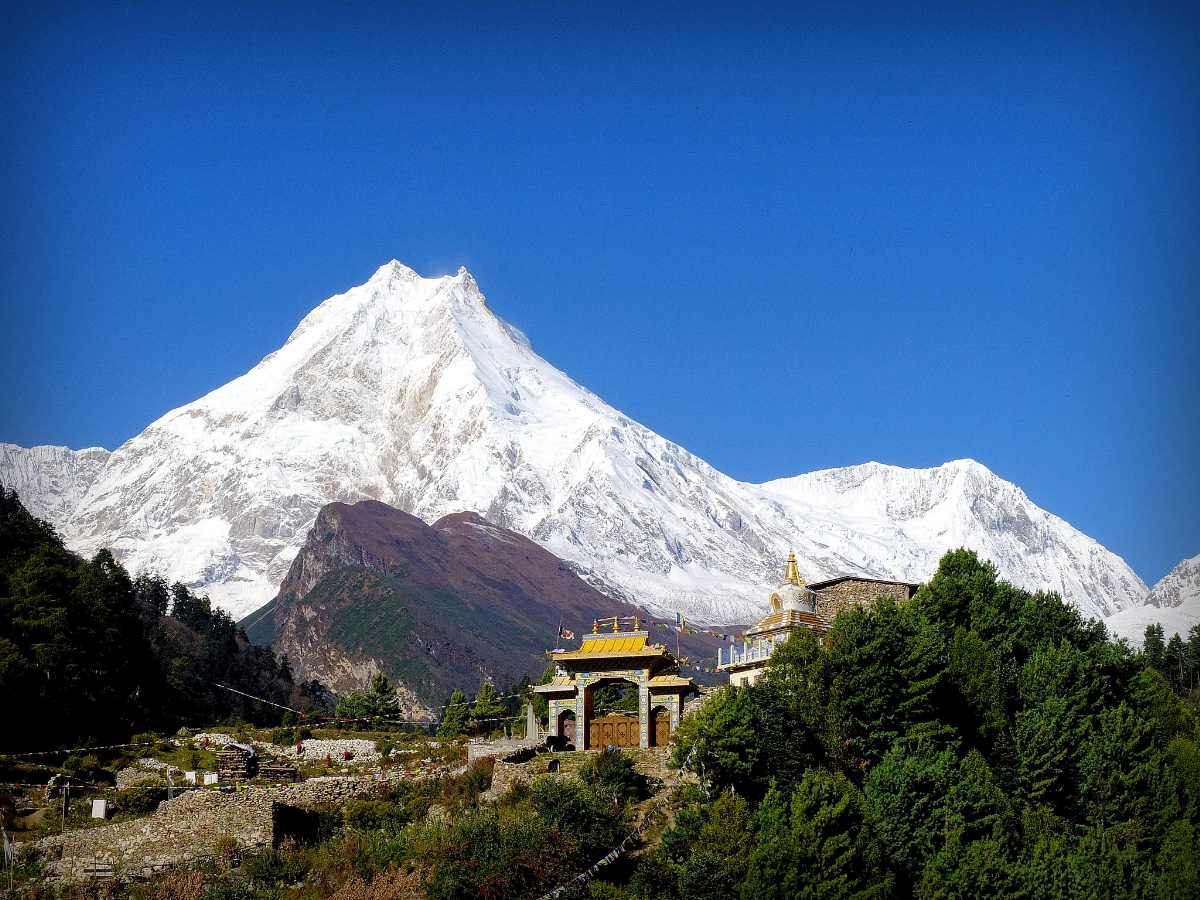Mount Manaslu, Nepal Overview
The word Manaslu comes from the Sanskrit word manas, which means a person's soul, and Mount Manaslu can be reflected as exactly that - the mountain of the soul. Despite all the chaotic craze around mountain trekking that Nepal experiences every season, Manaslu has surprisingly held on to its pristine, untarnished beauty. Rising from a rugged terrain of ridges and frozen valleys, the double peaks of Manaslu heads up into the brilliant blue sky like a proud guardian looking over the Gorkha district.
Mount Manaslu, at its 8,163 metres (21,781 feet) is the eighth highest peak of the world, making it one of the prestigious 8000m climbs for the Mountaineers. However, the Tibetan name of the mountain, which pronounces as 'Kutang' and means flat place, is an indicator of the surrounding glacial valleys and long ridges, which offer a comparative flatter climb to a certain extent. However, that does not mean it is an easy task. Manaslu has Ganesh Himal and the gorge of Burhi Gandaki on the east, the Annapurna massif on the west along with fissures of Marysyangdi Khola and the Gorkha Town in the south at the foot. The south face is said to be the toughest to conquer for even the best climbers.
Read More on Mount Manaslu
Highlights of Mount Manaslu - Keep an eye out

Since the Manaslu region is protected conservation, there are over a hundred species that reside here - snow leopards, red pandas, black bears, tahrs, macaques. You will probably not see them on your trekking route, but turn your eye towards the sky sometimes. You might sight one of the many species of birds that have been spotted here including Eurasian and Himalayan Griffon and a variety of pheasants.
Once in a while, you might just come across the residents of this place. Nubri and Tsums are the chief inhabitants of the Manaslu Himal, whose fields you had crossed in the first part of the trek. For the explorers at heart, there will be chances of close interactions with these ethnic groups and learning about their culture, customs and their daily livelihood in the mountain.
You would be surprised to learn how they hold their mountains in high regards, how they treat them as the entities that look after them in spite of the hardship of dire situations and adverse climate. To complete a trek for a week or two is one thing, but to live in it and with it, forms a different relationship. If the mountains call to you, this will be a great experience to know them from a different angle, a more up close and personal point of view.
History - The First Climb and Ever Since

The first time Manaslu was considered as a viable option of climbing was in 1950 when a European expeditor H.W. Tilman spotted Manaslu from Bumtang while exploring the peaks in and around the Annapurna massif. Unfortunately, a climb was not successful till 1956. All the efforts before were quit or left halfway because of lack of enough geographical knowledge, adverse climatic conditions and occasionally because of local unrest.
The ethnic tribes of the place considered the invasion of the mountains a wrong and the reason behind natural disasters like avalanche and landslides that used to hit their villages. Despite all the obstructions, a Japanese climber Toshio Imanishi with Sherpa Gyaltsen Norbu made the first ascent on May 9, 1956. While all these climbing expeditions were going on, the slightly less adventurous people were being left out from all the fun. Finally, in 1991, trekking in this circuit was allowed by the Nepal Government.
Manaslu Circuit Trek - The Magnificent Trek Route to Larkya La

Mountain climbing apart, Manaslu is a hidden gem of a trek experience in Nepal. The most popular route is the 177 km Manaslu Circuit through mostly rugged and some plain lands skirting the Manaslu massif. This route, just like the famous Annapurna Circuit, follows the ancient Salt Route along the Burhi Gandak River Valley.
Manaslu Circuit trek starts at Arughat Bazaar, summits at Larkya La and ends at Besisahar where the Annapurna Circuit begins. There are other routes as well, but the summit for most of those is Larkya La pass at the top.
The roads of the trekking routes take you winding through the ancient lands that have been here as old as time. The scenery changes from time to time - there are terraces scattered with the rare greenery of local agriculture, there are stretches of nothing but brown mud and rocks covered with powdery snow. From a place called Ligaon, the fertility of the land fades, and the ruggedness of the mountain starts. When you reach Lhogaon, the most awaited glimpse of the double peaks of Manaslu emerge.
Before reaching the summit, there is a village called Samagaon at the foothills where stands a Buddhist monastery. Its very existence amidst the wilderness of the mountains and pine forests is an enticing one. Halt at the Pang Phuchi village for a breathtaking view of the Tibetan pasture lands beyond the borders of Nepal.
And then there is the glacial saddle of Larkya La - your final destination - resting with all its glory and grandeur, pitted against the azure blue of the sky. The trekkers are rewarded with the views of quite a few 7000m+ peaks, like Himal Chuli, Ngadi Culi and Shringi. For a clear view of the main peak, you can trek up to the meadows of Bumtang. The return route passes through Dudh Khola and down to the land of Gorkhas.
Tips
- Earlier this trek route needed camping, but now there are places for lodging for the nights throughout. Local accommodation should be enough and trustworthy for the entire trek unless they are all taken on the peak seasons.
- The entire area where you will trek is restricted entry area. So, you will need to submit copies of your identity papers or card and then pay $50 per week and finally make sure to travel in a group of at least two with a registered Sherpa.
